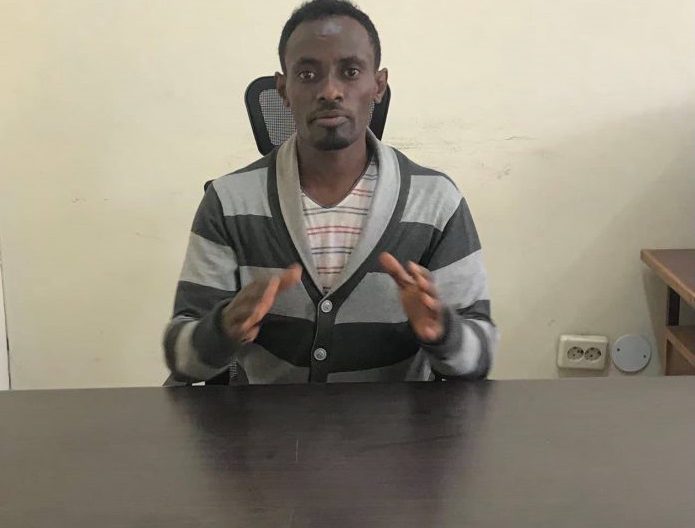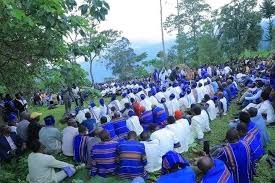
BY STAFF REPORTER
Ethiopia has been building a mega hydroelectric project, the Grand Ethiopian Renaissance Dam (GERD) on the River Abbay (Nile). Before the launching of the project as well as through the last 10 years since the starting of the construction, Ethiopian government has been engaged in series of dialogues to reach agreement on the fair and equitable utilization of the water.
However, most of the dialogues end up without agreement as the lower riparian countries, Egypt and Sudan always insist on maintaining the 1929 and 1959 treaties which entitle them historical usage rights. But the upper riparian’s refuse to adhere to these two agreements as they entitle the lower riparian’s for an unfair utilization of the water denying the water share of the upper riparian’s especially Ethiopia.
How do these international treaties relate to the treaties and principles of the 1929 and 1959 treaties and other riparian countries that Egypt adheres to? Ethiopian Press Agency has recently held an interview with Zewedu Mengesha, a professor of international law at Bahir Dar University Law School, to explain the document and other documents related to the Grand Ethiopian Renaissance Dam. Excerpts:
Can you brief us on the 1929 and 1959 treaties related to the utilization of Nile?
The treaties of 1929 and 1959 are often repeated in the lower riparian countries. The 1929 agreement was signed between Egypt and Great Britain; Egypt represented itself, and Great Britain represented the colonial powers. This agreement shows that Egypt, on the one hand, and Great Britain on the other side of the Basin, are in agreement.
The 1959 agreement you mentioned was an agreement with the group that ruled Egypt and the new Sudan just after Sudan’s liberation. The main reason for the 1959 agreement was the agreement reached in 1929 at the time of Sudan’s withdrawal from the colony, which did not protect Sudan’s interests.
By the way, it is known that during the 1959 agreement, His Majesty Emperor Haile Selassie I, the then emperor of Ethiopia, opposed the agreement. It is known that other riparian countries, especially Ethiopia, have repeatedly stated in the agreement that Ethiopia should participate in the agreement.
This agreement is often raised, and when we ask whether Ethiopia will abide by this agreement, it has nothing to do with Ethiopia. In particular, how agreements are made. There is a law called the Vienna Convention on How to Lead the Agreements: The Vienna Convention stipulates that the agreement between the two countries is binding only between the two countries and does not create any rights or obligations against any third party.
Therefore, the 1929 agreement and the 1959 agreement have nothing to do with Ethiopia. Because it was an agreement between Egypt and Sudan, as well as between Egypt and the British colonies. Therefore, it has nothing to do with Ethiopia; But they, for example, gave 55.5 billion cubic meters of water to Egypt, as is often the case in 1959; 18.5 billion cubic meters of water will be supplied to Sudan.
So far, Sudan has not been able to use this 18.5 billion cubic meters of water to the fullest extent possible. The reason for this is that there are frequent floods and they are not able to control it; This is because of the Roseires Dam, which has a capacity of 4.9 or five billion cubic meters of water. Therefore, in most cases, for example, only 12 to 13.5 billion cubic meters of water can be fully utilized; That’s how much water the Sudanese are currently using.
How do you see the claims of Egypt and Sudan on GERD from the perspective of international law?
Various issues are raised around the dam. Egypt’s main claim is to ensure ages old right to use. They believe that they have got a right to use through the 1929 agreement. They call it historical right. They want Ethiopia to accept this right.
Sudan poses various confusing issues around the dam. The main one is related to the safety of the dam. Dams built in recent years have better technology. They are much better than the technology during the construction of Aswan Dam. It is still operational without any problem. It is also many folds bigger than that of GERD. For instance its water content is 162 billion cubic meter while GERDs is only 74 billion cubic meters. But it is still serving without any problem since the 1950s.
The confusions aim at reinstating their former right of usage. The issue on Ethiopia’s side is that many of the people have no access to electricity, potable water and suffer from poverty. So its quest in connection with the water is a matter of ensuring equal and fair use. No other issue.
This does not raise any question from the perspective of international law. What they repeatedly raise is that there should be no significant harm on the lower riparians. This is right. But some damages are possible in the absence of a fair and reasonable system of utilization. If the already existing usage of water is not fair and reasonable it is likely to cause even more damages when the other side starts to use it. So the idea of not causing significant damage should consider fair and reasonable usage.
How important is the signing of the Cooperative Framework Agreement (CFA)?
CFA was open for endorsement after many years. It has passed through a lengthy debate under the World Bank supported Nile Basin Initiative (NBI). We can say that Ethiopia has made
a high level struggle in this process. Especially it has made high level effort to raise the framework to an agreement.
Previously there was no negotiation and meeting that involved all riparians with a principle of equal and fair utilization. We can say that Ethiopia was a champion of the agreement as it played a big role. It has taken a long time. Actually there were some attempts before. But they were dominated by Egypt and intend to ensure continuation of the existing water utilization. It focused on fraternity and cultural exchange rather than sharing the water equally and fairly.
The discrepancy prevails on the issue of security especially Article 14. When Egypt and Sudan argue that security means maintaining the existing water usage, other riparians insist that it refers to the existing and future usage.
This shows the upper riparian’s have so far not used the water properly while the lower riparians have diverted the water to other canals which is difficult to recognize. Since there are many place waiting to be developed, it is difficult to give recognition for Egypts quest which intends to allow the water for developing other places.
This clearly shows that Egyptians always tended to make sure that the 1929 and 1959 agreements are given recognition in the CFA. This could not get acceptance among the other riparians and Ethiopia.
The cooperation framework was believed to be an agreement if signed and endorsed by six countries. But there is a slowdown in the efforts of endorsing the framework. One of the reasons could be the decrease in the activities of Ethiopia. Now four countries have endorsed it. IF two more countries do the same, it will become an agreement. So there is a need to intensify the efforts towards it.
Currently Ethiopia, Rwanda, Tanzania and Uganda have ratified the agreement through their parliament. Burundi and Kenya have signed the document but have yet to ratify it through their legislative body. If these countries could ratify the document it is a plus for those who have already acceded. So Ethiopia should enhance the efforts in this regard.
Do you think the filling of the dam is an issue that should be tabled for negotiation? Is there any international law that prohibits the filling of the dam?
There are some conventions in line with international law. Apart from the agreements there are customary laws and principles. But Ethiopia has not reached any agreement with any of the lower riparians not to fill the dam without reaching agreements. Hence it reserves the right to fill the dam as per the principle of equity and fairness. There is no international legal provision against this. In general no law prohibits the filling of the GERD.
Yet, as per international law, there is an obligation not to cause significant harm. The main issue is to make sure that our current utilization of the water is equitable and fair. There is a difference in the utilization of the water. For instance Blue Nile has 49 billion cubic meters of water. The overall regime of Nile water is 84 billion cubic meters. The two countries have shared 74 billion cubic meters. This shows that the agreement that they are requesting to be respected is unfair and unreasonable.
Therefore there is no agreement that prohibits the filling of the dam. The Declaration of Principle also does not prohibit this. The international principles and customary laws also do not forbid the filling of the dam.
How do you think should water related disputes be solved? What international experience show?
Disputes related to transboundary Rivers must be addressed through agreements between the countries. There are some best practices of countries. They utilize the river on a centralized basis. For instance in Asia one country provides funding for building a dam while the other country agrees to supply electricity from the dam. This is determined by dialogue and negotiation. The experiences are the same in Africa and Europe. These best practices can solve the dispute. But the problem is the stance of lower riparian countries to maintain their rights which were entered in to force during colonial times.
How do you evaluate the stance of Ethiopian government in the construction of the dam and fair use of the water?
Ethiopia used to have a big role in realizing the Nile basin cooperative framework agreement through a lengthy negotiation through the Nile Basin Initiative. After launching the construction of the dam, Ethiopia’s has struggled a lot in handling complaints from the Egyptian side, allowing the scientific study of the impacts of the dam by organizing a tripartite national committee. It has tried out of good faith to explain to Egyptians and other lower riparian’s.
Good faith is a fundamental principle in international law. But the lower riparian countries always insist on old colonial treaties which entitled them with historical rights.
For example, all efforts to connect the dam to the lower basin are aimed at maintaining existing water use. This is difficult, especially for countries in the Nile Basin, where there is no fair and reasonable system of utilization. They want to protect that and We want to use it. Therefore, these should be reconciled, especially if the lower riparian countries are able to answer the question of the upper riparian countries in a sincere manner. If not, it is difficult.
The Ethiopian Herald 13 April 2021





